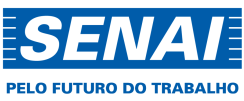Análise do Tratamento Químico em Carvão Ativado para Remoção do Corante Azul 5g
Resumo
A maioria dos estudos em adsorção são realizados em sistemas batelada, que são limitados a escala laboratorial e tem menor aplicação nos processos industriais. Os leitos fixos são particularmente interessantes devido à sua fácil operação e possibilidade de regeneração sem que o leito seja desmontado. Assim, o presente trabalho teve por objetivo estudar o equilíbrio de adsorção do corante reativo azul 5G utilizando carvão ativado de osso de boi bruto e tratado com NaOH, em sistemas de leito-fixo. Testes dinâmicos foram realizados com o fluxo ascendente em coluna, a 30 °C e diâmetro médio de partícula de 0,0765 mm. A vazão ótima de trabalho encontrada para ambos os adsorventes foi de 2 mL min-1. As isotermas foram obtidas pelo balanço de massa nas curvas de ruptura, e foram ajustadas aos modelos de Langmuir e Freundlich. O carvão ativado de osso de boi demonstrou ter potencial para ser usado como um adsorvente alternativo na remoção do corante azul 5G presente em efluentes têxteis. E na adsorção também foi verificado que a funcionalização da superfície química do carvão não foi significativa no processo.
Referências
2. Taylor, P.; Manenti, D.R.; Trigueros, D.E.G.; Oliveira, A.P.; Borba, C.E, Kroumov, A.D. Assessment of the banana pseudostem as lowcost biosorbent for removal of the reactive blue 5G dye. Environ Technol. p. 37-41, 2015.
3. Kunz, A.; Peralta-Zamora, P.; Moraes, S.G. de; Durán, N. Novas tendências no tratamento de efluentes têxteis. Quim Nova, v. 25, n. 1, p. 78-82, 2002.
4. Huang, Z.; Li, Y.; Chen, W.; Shi, J.; Zhang, N.; Wang, X.; Li, Z.; Gao, L.; Zhang, Y. Modified bentonite adsorption of organic pollutants of dye wastewater. Mater Chem Phys. v. 202, p. 266-276, 2017.
5. Mittersteiner, M.; Schmitz, F.; Barcellos, I.O. Reuse of dye-colored water post-treated with industrial waste: Its adsorption kinetics and evaluation of method efficiency in cotton fabric dyeing. J Water Process Eng. v.17, p. 181-187, 2017.
6. Marrakchi, F.; Khanday, W.A.; Asif, M.; Hameed, B.H. Cross-linked chitosan/sepiolite composite for the adsorption of methylene blue and reactive orange 16. Int J Biol Macromol. v. 93, p. 1231-1239, 2016.
7. Cheng, Z.; Zhang, L.; Guo, X.; Jiang, X.; Liu, R. Removal of Lissamine rhodamine B and acid orange 10 from aqueous solution using activated carbon/surfactant: Process optimization, kinetics and equilibrium. J Taiwan Inst Chem Eng. v. 47, p. 149-159, 2015.
8. Ruthven, D.M. Principles of Adsorption and Adsorption Process. New York: John Wiley & Sons; 1984.
9. Goswami, M.; Phukan, P. Enhanced adsorption of cationic dyes using sulfonic acid modified activated carbon. J Environ Chem Eng. v. 5, n. 4, p. 3508-3517, 2017.
10. Stawiński, W.; Węgrzyn, A.; Dańko, T.; Freitas, O.; Figueiredo, S.; Chmielarz, L. Acid-base treated vermiculite as high performance adsorbent: Insights into the mechanism of cationic dyes adsorption, regeneration, recyclability and stability studies. Chemosphere. v. 173, p. 107-115, 2017.
11. Sana, D.; Jalila, S. A comparative study of adsorption and regeneration with different agricultural wastes as adsorbents for the removal of methylene blue from aqueous solution. Chinese J Chem Eng. v. 25, n. 9, p. 1282-1287, 2017.
12. Gupta, V.K.; Agarwal, S.; Olgun, A.; Demir, H.I.; Yola, M.L.; Atar, N. Adsorptive properties of molasses modified boron enrichment waste based nanoclay for removal of basic dyes. J Ind Eng Chem.v. 34, p. 244-249, 2016.
13. Kyzas, G.Z.; Lazaridis, N.K.; Kostoglou, M. Adsorption/desorption of a dye by a chitosan derivative: Experiments and phenomenological modeling. Chem Eng J. v. 248, p. 327-336,2014.
14. Gong, J.L.; Zhang, Y.L.; Jiang, Y.; Zeng, G.M.; Cui, Z.H.; Liu, K.; Deng, C.H.; Niu, Q.Y.; Deng, J.H.; Huan, S.Y. Continuous adsorption of Pb(II) and methylene blue by engineered graphite oxide coated sand in fixed-bed column. Appl Surf Sci. v. 330, p. 148-157, 2015.
15. Mohammed, N.; Grishkewich, N.; Waeijen, H.A.; Berry, R.M.; Tam, K.C. Continuous flow adsorption of methylene blue by cellulose nanocrystal-alginate hydrogel beads in fixed bed columns. Carbohydr Polym. v. 136, p. 1194-1202, 2016.
16. Elmoubarki, R., Mahjoubi, F.Z.; Tounsadi, H.; Moustadraf, J.; Abdennouri, M.; Zouhri, A.; El Albani, A.; Barka, N. Adsorption of textile dyes on raw and decanted Moroccan clays: Kinetics, equilibrium and thermodynamics. Water Resour Ind. v. 9, p. 16-29, 2015.
17. Mendoza-Castillo, D.I.; Bonilla-Petriciolet, A.; Jáuregui-Rincón, J. On the importance of surface chemistry and composition of Bone char for the sorption of heavy metals from aqueous solution. Desalin Water Treat. v. 54, n. 6, p. 1651-1662, 2015.
18. Medellin-Castillo, N.A.; Leyva-Ramos, R.; Padilla-Ortega, E.; Perez, R.O.; Flores-Cano, J.V.; Berber-Mendoza, M.S. Adsorption capacity of bone char for removing fluoride from water solution. Role of hydroxyapatite content, adsorption mechanism and competing anions. J Ind Eng Chem. v.20, n. 6, p. 4014-4021, 2014.
19. Rojas-Mayorga, C.K.; Bonilla-Petriciolet, A.; Aguayo-Villarreal, I.A.; Hernández-Montoya, V.; Moreno-Virgem, M.R.; Tovar-Gómez, R.; Montes-Morán, R. Optimization of pyrolysis conditions and adsorption properties of bone char for fluoride removal from water. J Anal Appl Pyrolysis. v. 104, p.10-18, 2013.
20. Ko, D.C.K.; Cheung, C.W.; Choy, K.K.H.; Porter, J.F.; McKay, G. Sorption equilibria of metal ions on bone char. Chemosphere. v.54, n. 3, p. 273-281, 2004.
21. Chen, Y.N.; Chai, L.Y.; Shu, Y. Study of arsenic(V) adsorption on bone char from aqueous solution. J Hazard Mater. v. 160, n. 1, p. 168-172, 2008.
22. Pan, X.; Wang, J.; Zhang, D. Sorption of cobalt to bone char: Kinetics, competitive sorption and mechanism. Desalination. v. 249, n. 2, p. 609-614, 2009.
23. Reynel-Avila, H.E.; Mendoza-Castillo, D.I.; Bonilla-Petriciolet, A.; Silvestre-Albero, J. Assessment of naproxen adsorption on bone char in aqueous solutions using batch and fixed-bed processes. J Mol Liq. v.209, n.187-195, 2015.
24. Ip, A.W.M.; Barford, J.P.; McKay, G. A comparative study on the kinetics and mechanisms of removal of Reactive Black 5 by adsorption onto activated carbons and bone char. Chem Eng J. v. 157, n. 2-3, p. 434-442, 2010.
25. Ip, A.W.M.; Barford, J.P.; McKay, G. Reactive Black dye adsorption/ desorption onto different adsorbents: Effect of salt, surface chemistry, pore size and surface area. J Colloid Interface Sci. v. 337, n. 1, p. 32-38, 2009.
26. Walker, G.M.; Weatherley, L.R. Adsorption of dyes from aqueous solution - The effect of adsorbent pore size distribution and dye aggregation. Chem Eng J. v. 83, n. 3, p. 201-206, 2001.
27. Ghanizadeh, G.; Asgari, G. Adsorption kinetics and isotherm of methylene blue and its removal from aqueous solution using bone charcoal. React Kinet Mech Catal. v. 102, n. 1, p. 127-142, 2011.
28. Silva, P.H.R.; Barbosa, J.G.; Barella, R.A.; Araújo, A.B.C.; Ostroski, I.C. Comparative study of the adsorption of cadmium and zinc on activated bone char. Acta Sci Technol. v.39, n. 2, p. 215, 2017.
29. Winter, C.; Caetano, J.N.; Araújo, A.B.C.; Chaves, A.R.; Ostroski, I.C.; Vaz, B.G.; Perez, C.N. Activated carbons for chalcone production: Claisen-Schmidt condensation reaction. Chem Eng J. v. 303, p. 604-610, 2016.
30. Geankoplis, C.J. Transport Processes and Unit Operations. 4th ed. USA; 2003.
31. McCabe, W.L.; Smith, J.C. Unit Operations of Chemical Engineering. 6th ed. McGraw-Hill International; 2005.
32. Pereira, M.R.; Arroyo, P.A.; Barros, M.A.S.D.; Sanches, V.M.; da Silva, E.A.; Fonseca, I. M.; Lovera, R.G. Chromium adsorption in olive stone activated carbon. Adsorption. v. 12, n. 2, p. 155-162, 2006.
33. Gazola, F.C.; Pereira, M.R.; Barros, M.A.; Silva, E.; Arroyo, P. Removal of Cr3+ in fixed bed using zeolite NaY. Chem Eng J. v. 117, p. 253-261, 2006.
34. Geankoplis, C.J. Transport Processes and Unit Operations. 3rd ed. PTR Prentice Hall; 1993.
35. Vijayaraghavan, K.; Jegan, J.; Palanivelu, K.; Velan, M. Biosorption of copper, cobalt and nickel by marine green alga Ulva reticulata in a packed column. Chemosphere. v. 60, p. 419-426, 2005.
36. Song, S.; Hau, Y.; Saman, N.; Johari, K.; Cheu, S-C.; Kong, H.; Mat, H. Process analysis of mercury adsorption onto chemically modified rice straw in a fixed-bed adsorber. J Environ Chem Eng. v. 4, n. 2, p. 1685-1697, 2016.
37. Netpradit, S.; Thiravetyan, P.; Towprayoon, S. Evaluation of metal hydroxide sludge for reactive dye adsorption in a fixed-bed column system. Water Res. v. 38, p. 71-78, 2004.
38. Lakshmipathy, R.; Sarada, N.C. A fixed bed column study for the removal of Pb2+ ions by watermelon rind. Environ Sci Water Res Technol. v. 1, n. 2, p. 244-250, 2015.
39. Tamez Uddin, M.; Rukanuzzaman, M.; Maksudur Rahman Khan, M.; Akhtarul Islam, M. Adsorption of methylene blue from aqueous solution by jackfruit (Artocarpus heteropyllus) leaf powder: A fixedbed column study. J Environ Manage. v. 90, n. 11, p. 3443-3450, 2009.
40. Purkait, M.K.; DasGupta, S.; De, S. Adsorption of eosin dye on activated carbon and its surfactant based desorption. J Environ Manage. v. 76, n. 2, p. 135-142, 2005.
41. Giles, C. H.; MacEwan, T. H.; Nakhwa, S.N.; Smith, D. Studies in adsorption. Part XI. A system of classification of solution adsorption isotherms, and its use in diagnosis of adsorption mechanisms and in measurement of specific surface areas of solids. J Chem Soc. v. 846, n. 3973-3993, 1960.
42. Chandra, V.; Park, J.; Chun, Y.; Lee, J.W.; Hwang, I-C.; Kim, K.S. Water-Dispersible Magnetite-Reduced Graphene Oxide Composites for Arsenic Removal. ACS Nano. v. 4, n. 7 p. 3979-3986, 2010.
43. Sewu, D.D.; Boakye, P.; Woo, S.H. Highly efficient adsorption of cationic dye by biochar produced with Korean cabbage waste. Bioresour Technol. v. 224, p. 206-213, 2017.
44. Hu, Z.P.; Gao, Z.M.; Liu, X.; Yuan, Z.Y. High-surface-area activated red mud for efficient removal of methylene blue from wastewater. Adsorpt Sci Technol. v. 0, p. 1–18, 2017.
45. Jain, S.N.; Gogate, P.R. Acid Blue 113 removal from aqueous solution using novel biosorbent based on NaOH treated and surfactant modified fallen leaves of Prunus Dulcis. J Environ Chem Eng. v. 5, n. 4, p. 3384-3394, 2017.
46. Jesus, A.M.D.; Romão, L.P.C.; Araújo, B.R.; Costa, A.S.; Marques, J. J. Use of humin as an alternative material for adsorption/desorption of reactive dyes. Desalination. v. 274, n. 1, p. 13-21, 2011.
47. Honorio, J.F.; Veit, M.T.; Cunha-Gonçalves, G.; Campos, E.A.; Fagundes-Klen, M.R. Adsorption of reactive blue BF-5G dye by soybean hulls: Kinetics, equilibrium and influencing factors. Water Sci Technol. v.73, n. 5, p. 1166-1174, 2016.
Copyright (c) 2005 Revista Processos Químicos

This work is licensed under a Creative Commons Attribution-NonCommercial 4.0 International License.







